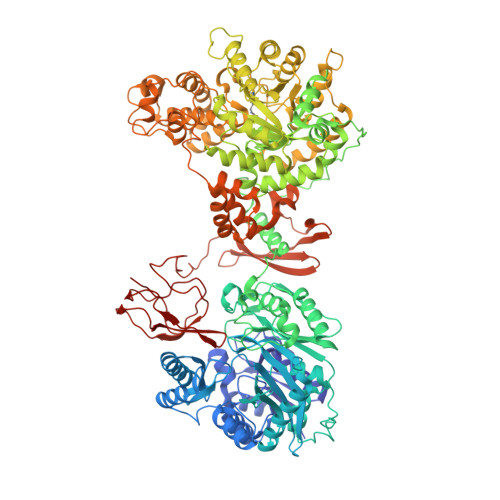CryoEM structural exploration of catalytically active enzyme pyruvate carboxylase.
Lopez-Alonso, J.P., Lazaro, M., Gil-Carton, D., Choi, P.H., Tong, L., Valle, M.(2022) Nat Commun 13: 6185-6185
- PubMed: 36261450
- DOI: https://doi.org/10.1038/s41467-022-33987-2
- Primary Citation of Related Structures:
7ZYY, 7ZYZ, 7ZZ0, 7ZZ1, 7ZZ2, 7ZZ3, 7ZZ4, 7ZZ5, 7ZZ6, 7ZZ8 - PubMed Abstract:
Pyruvate carboxylase (PC) is a tetrameric enzyme that contains two active sites per subunit that catalyze two consecutive reactions. A mobile domain with an attached prosthetic biotin links both reactions, an initial biotin carboxylation and the subsequent carboxyl transfer to pyruvate substrate to produce oxaloacetate. Reaction sites are at long distance, and there are several co-factors that play as allosteric regulators. Here, using cryoEM we explore the structure of active PC tetramers focusing on active sites and on the conformational space of the oligomers. The results capture the mobile domain at both active sites and expose catalytic steps of both reactions at high resolution, allowing the identification of substrates and products. The analysis of catalytically active PC tetramers reveals the role of certain motions during enzyme functioning, and the structural changes in the presence of additional cofactors expose the mechanism for allosteric regulation.
Organizational Affiliation:
CIC bioGUNE, Basque Research & Technology Alliance (BRTA), Bizkaia Technology Park, Derio, Bizkaia, Spain.























